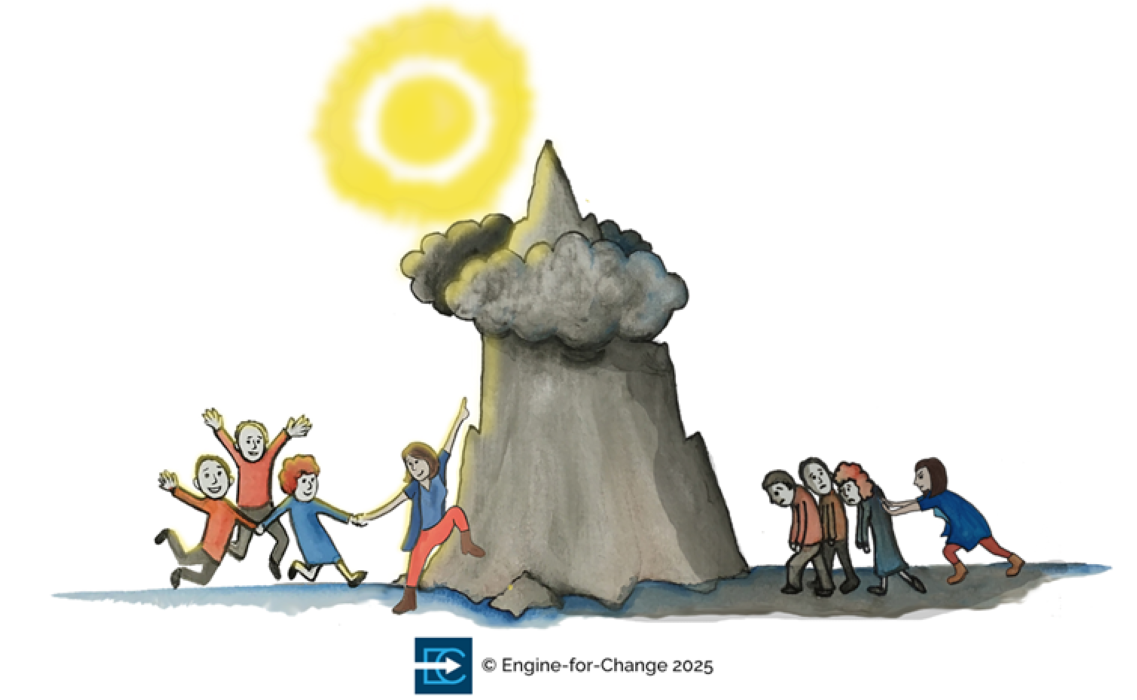Nothing stops the change process in its tracks like hearing: “Our culture won’t allow us to do that.”
Though the words are simple — often uttered reflexively with little thought — they can serve as a daunting wall standing in the path of positive change.
How Is Culture Built?
Culture is made up of the behavior patterns of people who live within it. The patterns are the result of an understanding by each individual of their role (or roles) within an organization. The culture emerges and takes shape via these engrained mind maps created by the connected thoughts of individuals.
To change culture, mind maps (thought paths), roles and patterns must be tackled.
There are countless texts about culture change. A recent insightful publication by Siobhan McHale, a change consultant who has worked in the trenches for more than 20 years, breaks workplace culture down to three elements:
- Mind Maps
- Patterns
- Roles
Published in 2020, The Insider’s Guide to Culture Change: Creating a Workplace That Delivers, Grows, and Adapts offers effective, easily applied and tried-and-true advice on one of the most challenging aspects of implementing real change in today’s business environment.
Defining The Elements
Here are broad descriptions of the three elements Ms. McHale discusses.
Mind Maps: These are a series of thoughts, each following and affecting the next through linking words and linking concepts, ultimately reaching a final decision or conclusion. This can be illustrated by the process of vacation planning. My first thought may be: I want to schedule some time off and go somewhere. I then proceed through a series of thoughts linked to options on when, where and what we will do, until reaching a conclusion. Our minds follow self-created maps that can be visualized in many ways, perhaps on a board, for example, through a series of actions and decisions.
Patterns: A grouping of linked behaviors, rather than a single behavior, results in a thought pattern. To illustrate, I tend to wake up daily at 5 a.m. and then get on the treadmill for a 1-mile run before getting into other daily activities. This is a pattern, not a behavior. Patterns are regular, consistent linked behaviors that follow in predictable pathways, like following a groove on a record.
Roles: We all have a good idea of what our roles are in the workplace, usually because someone in authority has defined your job. How roles are defined can make a powerful difference. Perhaps someone tells you your job is to serve as a “guard.” But slight nuances in how this role is defined can result in different mindsets and patterns of behavior. Suppose someone tells you: “Kyle, I want you to help Ms. Peterson cross the street.” Then someone else tells you: “Kyle, I want you to guard Ms. Peterson and keep her from being harmed.” One role is specific while the other broad. This can result in different mind maps and patterns of behavior.
Consider Parallel Workstreams
My experience with culture shifting follows Ms. McHale’s recommendations, though with a slight variation.
I first concentrate on redefining roles and what success would look like if a role was optimally performed. This then creates new mind maps and patterns of behavior. Change efforts should follow two parallel workstreams:
- Create a clear understanding, acceptance, and ability to perform a role in times of change, and
- Create a clear understanding, acceptance, and ability to perform the change itself as designed.
By keeping both workstreams alive and well, we can shift a culture and change mindsets towards positive, continuous improvement.
Another effective action that helps to establish new mind maps and patterns within the change team is to fully define and then repeat questions such as:
- What does success look like?
- How will we know we are there?
- How should Person X think, act and perform if he or she fully understands their role in this change?
Asking these sorts of questions helps to identify and define the gaps we are trying to close. Our current state of where we are now should be compared and contrasted with our future state of where we want to be.
A Final Word of Caution
We must not forget we are dealing with human beings so we must meet them where they’re at and push them at a pace they can handle. We’ve all heard this before, though it bears repeating. My own experience in proceeding at an uncomfortably fast pace has refreshed this concept for me in terms of bruised tissue.
While the end goal may be very clear to the change practitioner, it may be an abstract concept defined by words that seem unfamiliar and far away to those we are trying to reach. Conventional techniques for adult learning say to push them just outside their comfort zone. There is a fine line, however, when discomfort can lock people down if pushed too far. If this happens, it takes much longer to reach our end goal for the change we want to see. Remember it is important to tailor the pace, not just strategy.







